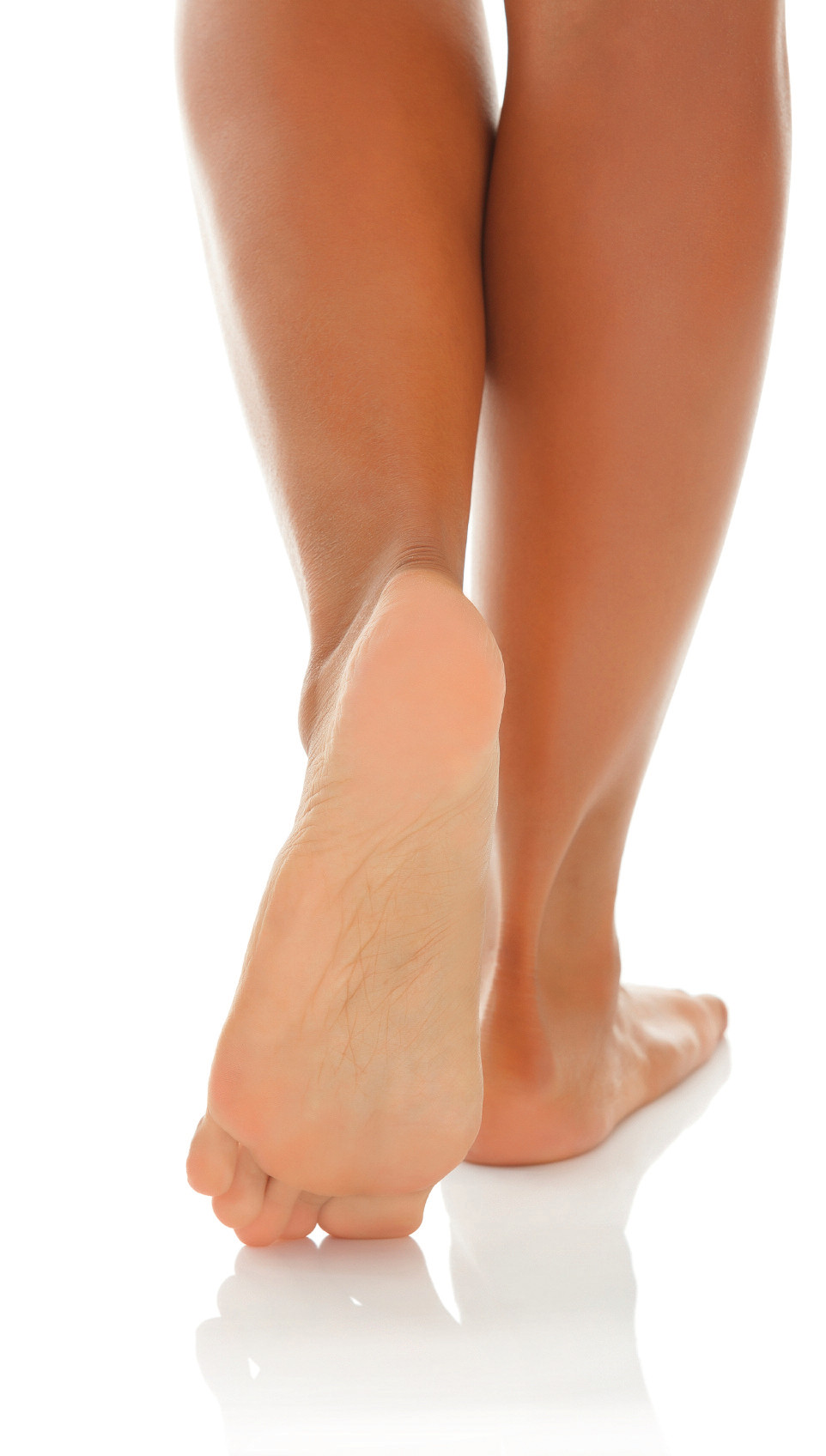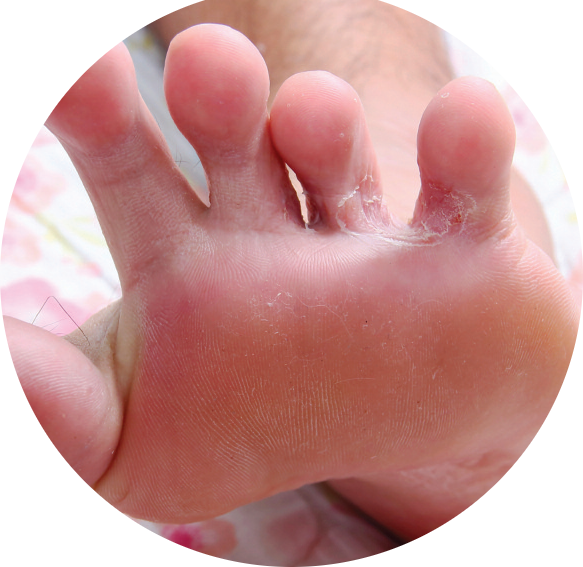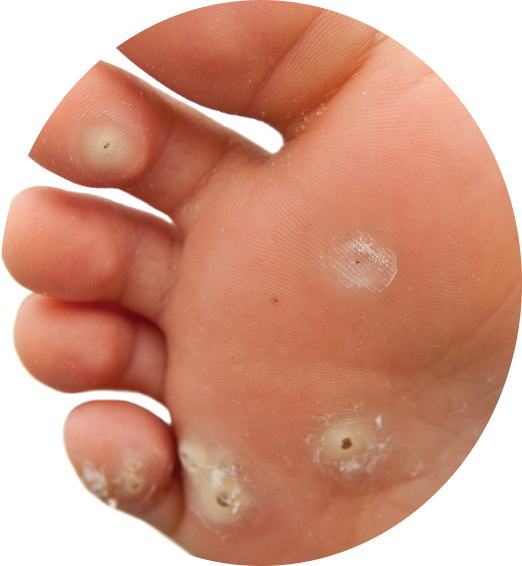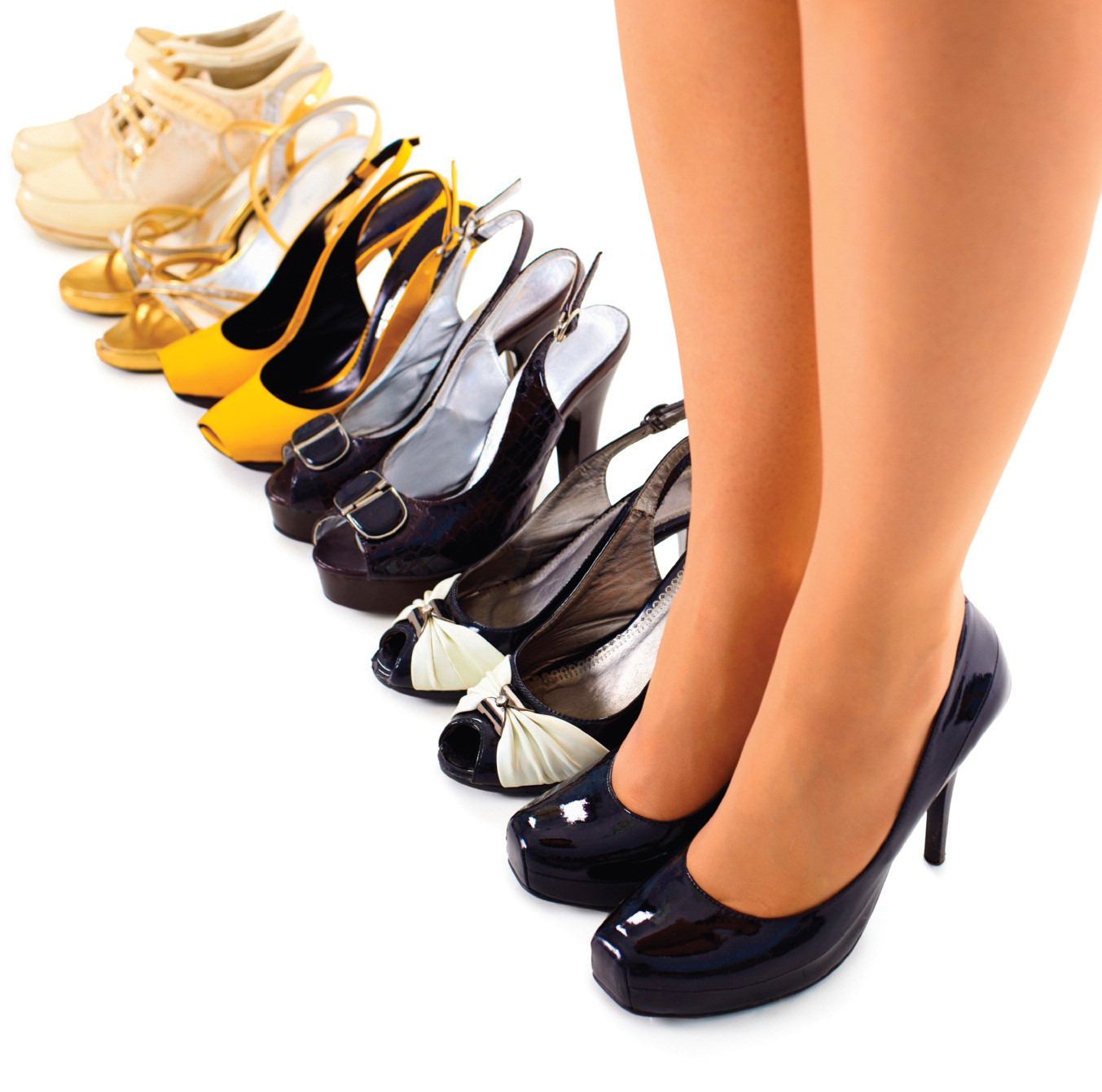Foot care: Walking the walk
In Clinical
Follow this topic
Bookmark
Record learning outcomes
Being known as the place to go for help when common foot and leg problems occur is a great way to increase footfall in your pharmacy...

Learning objectives
After reading this feature you should be able to:
- Recognise risk factors for foot and leg conditions
- Explain how to choose footwear that fits correctly
- Advise on both the prevention and treatment of common foot problems
New research from the College of Podiatry shows that 90 per cent of men and women experience some sort of foot problem, with 20 per cent saying they suffer with foot pain often or constantly. Despite this, only 23 per cent of people who have suffered a foot problem sought professional help, and 16 per cent admit to ignoring the problem, hoping it goes away. Many foot problems are triggered by poor lifestyle choices.
According to the College of Podiatry's Big Foot Nation report, which was published in June 2014, many people are risking foot problems by squeezing their feet into shoes that are too small and narrow. The report shows that the average shoe size in the UK has increased by around two sizes over the past four decades, with the average man now wearing a size 10 and the average woman wearing a size six. Both men and women admitted to buying shoes that don't fit, with many not even knowing what size shoe they should be wearing.
Not surprisingly, 29 per cent of women and 18 per cent of men reported suffering from daily or frequent sore, aching feet. Foot problems tend to be commoner in women, as men are less likely to wear ill-fitting shoes. However, according to Michael O'Neill, consultant podiatrist and spokesperson for the College of Podiatry, poor hygiene is a big factor affecting men's foot health. €Men tend to take less care of their feet on a regular basis,€ he says.
€The increasing use of gyms has led to an increase in athlete's foot and fungal nail infections over the past 20 years. The increase in obesity has led to more sweating of the feet. This means there is a greater demand for suitable products, such as surgical spirit, charcoal-based insoles and antiperspirants.€
Weight matters
In the Big Foot Nation report, both men and women said that their feet have changed size as an adult, attributing this to putting on weight and getting older. According to the latest figures for England from the Department of Health (published in May 2015), 61.9 per cent of adults and 28 per cent of children between two and 15 years of age are obese or overweight. As people gain weight, their foot ligaments and joints need to work harder to maintain the foot's structure.
This can cause pain, lead to mobility issues and increase the risk of developing osteoarthritis in the lower limb joints. €Generally the nation is getting bigger,€ says Dr Amanda Squire, dietitian and spokesperson for the British Dietetic Association.
€As people are putting on weight, their feet naturally spread. Arches tend to drop, so feet become flatter as well. In adults any additional weight carried changes the way feet work and function. This may exacerbate existing problems, such as ligament damage or old injuries.
€With extreme obesity, balance and stability are likely to be weaker and less co-ordinated, and people may start walking in a different way. This can create a vicious circle, as then people are unable to exercise and less able to lose the extra weight. Increasing numbers of children are also being classified as overweight and obese. This is a significant problem as their feet are still developing and could lead to a whole generation with foot problems in adulthood.€
Health risks
Maintaining a healthy weight, or losing weight if necessary, can help to reduce the risk and symptoms of common foot problems. €Being overweight puts more pressure on the feet, so each step has more impact,€ says Michael O'Neill. €Losing weight can definitely help.€
Dr Squire says that many dietitians are now working with podiatrists to tackle the issues of obesity and foot health together. Some foot problems, such as plantar fasciitis (pain in the heel) are often associated with weight gain or standing for long periods of time. Research published in 2015 looking at the epidemiology of posterior heel pain found that obesity, manual occupations and physical inactivity were key risk factors for this common foot problem.
Occasionally foot pain is a sign of a chronic underlying health problem, such as arthritis. Research in 2014 published in Arthritis Care Research found that a high body mass index in middle-aged women is associated with foot joint pain, independent of age. According to the standards of care document for the Podiatry Rheumatic Care Association, nearly a quarter of people with arthritis have corns and calluses and 17 per cent have foot ulcers.
Rheumatoid arthritis can make people more prone to corns and calluses if their feet are swollen or inflamed and rub against shoes. Foot pain can affect how people walk, which may make other arthritis-associated symptoms (e.g. back pain) worse. In December 2013, research at Queen Margaret University in Edinburgh, published in the medical journal Foot, revealed that orthotics (shoe inserts) can help foot pain and possibly joint inflammation in people with rheumatoid arthritis.
According to Diabetes UK, as many as a third of the 3.2m people diagnosed with diabetes in the UK are deemed to be at high or increased risk of a 'foot attack', which is an injury to a foot that has reduced feeling or lowered blood circulation. In April 2015, the charity revealed that more than 400,000 people with diabetes in England are not having an annual foot check. In addition to this, even when people do get foot checks, often these are not thorough enough.
Some people are not even being asked to remove their shoes or socks. Diabetes UK wants healthcare professionals to make sure people who are at a high or increased risk understand the importance of good foot care and are aware of the urgent need to see a doctor if they have any signs of a foot attack. €Diabetes patients can lose feeling in their feet,€ says Alison Freemantle, pharmacist from AAH Pharmaceuticals' Careway programme.
€This means they are sometimes unaware of problems developing in that area, making MURs and one-to-one time with patients incredibly important. €Through Careway, the partnership programme from AAH, pharmacists are offered two modules: type 2 diabetes screening and/or a foot health check service for people with diabetes, which can accompany services already offered within the pharmacy.€
Ageing effects
As people get older, they are much more likely to suffer from foot conditions and complaints, such as bunions and stiffness in toe joints and ankles. These problems all affect balance and walking, and reduce sensation in the feet, which often leads to falls. In England, 2.5m people over 75 years of age have a fall at least once each year.
This is often due to poor foot health and footwear choices. Elderly customers should be advised to check their feet regularly and speak to their GP, podiatrist or chiropodist if they notice any problems. Pain is not a natural part of ageing and should not be ignored.
According to research published in 2008, walking barefoot or in socks indoors and walking indoors or outdoors in high-heel shoes have been shown to increase the risk of falls in older people. €As people get older, it is important to check their footwear,€ says Michael O'Neill.
€This isn't just about their shoes. A lot of elderly people wear old slippers around the house, yet slippers need to be changed regularly. They don't offer much support and if the slipper soles are too 'grippy', this means people catch their feet easily.€
Community pharmacists have an important role to play in identifying people suffering from foot and leg care issues. €Pharmacists see patients every month when they collect prescriptions, which provides an optimum opportunity to ask about their foot health and see if they are experiencing any problems,€ says Alison Freemantle. €This is particularly important for elderly patients, who are less mobile and may not be able to easily reach or check their own feet.€
Providing a range of foot care products and grooming/mobility aids can help customers of any age improve their foot care regimen. Freemantle recommends that customers with poor dexterity and/or mobility use a mirror to look at their feet if they have difficulty reaching them or looking at them first hand. Easy-to-use long-handled nail scissors and foot files, and nail clippers with a mirror attached, are useful tools that pharmacies can stock, she says.
Common conditions
Many minor foot and leg problems can be treated with over-the-counter medicines and simple self-help advice from the pharmacy team
Athlete's foot
 Athlete's foot is a common fungal infection that develops between the toes. It is particularly common in teenagers and young adults. The affected skin may be red, moist, scaly or flaky.
Athlete's foot is a common fungal infection that develops between the toes. It is particularly common in teenagers and young adults. The affected skin may be red, moist, scaly or flaky.
Mild cases can usually be treated with antifungal creams or gels and clear up after a few days or weeks. Athlete's foot spreads very easily from person to person, as the fungi multiply quickly in warm and humid environments (e.g. swimming pools, showers and changing rooms). Good foot hygiene can help to reduce the spread of an infection.
Customers should dry their feet thoroughly after washing (particularly between the toes), wear clean cotton socks, and change their shoes and socks regularly, especially after exercising. They shouldn't walk barefoot or share towels or clothes.
Tired, aching legs
Customers who stand all day should aim to move around regularly or flex their legs up and down to improve their circulation. Putting their feet up at the end of the day and not crossing their legs for long periods can help to ease aching, tired legs. Footwear choices are important too €“ ideally, customers should wear supportive trainers for walking and vary their heel heights during the day.
 Verrucas
Verrucas
Most verrucas, which develop on the soles of the feet, are harmless. They don't cause any pain, unless they are on a weight-bearing part of the foot. The affected skin is usually white and may have a black spot in the centre.
Verrucas are highly contagious and spread easily through contact with contaminated changing room floors or swimming pool areas. They usually disappear on their own, but this can take up to two years. Several treatment options are available OTC, including salicylic acid gels, creams, plasters and paints, and cryotherapy products.
Cracked heels
Cracked heels are often caused by open-backed shoes, such as sandals or flip-flops rubbing the skin. Applying a moisturising cream or specially formulated foot cream, twice daily, will keep feet smooth and soft. Any hard skin can be removed with a pumice stone or non-metal foot file; these are most effective when used during a bath or shower.
Blisters
Blisters can be painful and are more likely to occur in hot weather, when sandals or flipflops rub against the skin. Anti-blister sticks and blister plasters can provide instant relief and prevent further damage. Customers should be advised not to pop blisters, as this increases the risk of infections €“ instead, they should cover them with a protective gel dressing.
Fungal nail infections
 Fungal nail infections are commonest in people who wear shoes in hot sweaty weather, regularly damage their nail or skin, or have certain health conditions such as diabetes or psoriasis. The infection usually develops slowly and causes the nail to become thickened and discoloured. The nail may turn white, black, yellow or green, but isn't usually painful.
Fungal nail infections are commonest in people who wear shoes in hot sweaty weather, regularly damage their nail or skin, or have certain health conditions such as diabetes or psoriasis. The infection usually develops slowly and causes the nail to become thickened and discoloured. The nail may turn white, black, yellow or green, but isn't usually painful.
Mild fungal nail infections usually clear up on their own, although a GP may check for any underlying conditions. Antifungal nail paint may be effective if only the end of the nail is infected, but this needs to be used for up to six months or even a year.
Antifungal tablets are up to 80 per cent effective, but again need to be taken for several months. Most treatment failure occurs because people stop using the medicines too early. In severe or painful cases, the nail may be removed with surgery.
Foot odour
Teenagers and pregnant women are particularly prone to sweaty feet, because hormonal changes make them sweat more often. Ideally, customers should wash their feet every morning and night with warm soapy water and change their socks at least once a day. An antibacterial wash, followed by a wipe with cotton wool soaked in surgical spirit, can help to combat any odour. Medicated insoles and 'feet fresh' socks have a deodorising effect.
Ingrown toenails
Nails should be cut regularly straight across, never at an angle or down the edges. An ingrown toenail develops when the sides of a toenail (usually the big toe) grow into the surrounding skin. The skin then becomes red, swollen and tender. Left untreated, an ingrown toenail can become infected. Pushing the skin away from the nail with a cotton bud may help. However, if the problem persists, or the nail is very inflamed, bleeds or has any pus, customers should seek medical advice from a GP or podiatrist
Choosing footwear
If customers are experiencing foot pain or discomfort, it is usually because they are not wearing the right footwear.
€A major problem is cramming big feet into little shoes,€ says Michael O'Neill. €This is worse in pregnancy when many women go up a foot size as their ligaments relax and they switch to less supportive footwear, such as flip-flops. If people are flat footed, they can walk like a duck, especially if they wear ballerina-type shoes. To compensate, they need a little heel, such as a loafer.€
€If women wear too high a heel, this causes them to lean backwards and they can damage their lower back. Wearing the wrong shoes can exacerbate degenerative changes in feet. It is also important to wear footwear appropriate for the job involved.€ Some retailers have introduced wider fitting shoe ranges, but many people buy shoes online or don't have their shoes professionally fitted.
According to the College of Podiatry, 51 per cent of people find it difficult to find comfortable shoes that they also consider to be fashionable. People are nearly twice as likely to buy shoes too small as too big, and some 26 per cent of people say they bought their shoes online and didn't realise they wouldn't fit.

Women are more likely to wear ill-fitting shoes than men...
€Footwear should have a slight heel, rather than being dead flat, and should feel comfortable without any pinching,€ says Michael Radcliffe, Carnation Footcare podiatrist.
€The toes should be able to wiggle freely. When buying shoes, follow the 'rule of thumb' €“ there should be enough room for a sideways thumb in front of the longest toe. This is especially important for children. If a shoe is very hard over the heel, this can lead to bruising and inflammation. Tight shoes can cause friction, leading to blistering and hard skin.€
€Many modern shoes curve up at the ends, which forces the toes upwards and can lead to instability of the joints, causing bunions and tailor's bunion. If the shoe is too flexible (e.g. ballet pumps), then this can lead to arch and heel pain.€
Key facts
- Many people don't know what size shoe they should be wearing
- As people gain weight, their foot ligaments and joints need to work harder to maintain the foot's structure
- Obesity, manual occupations and physical inactivity are key risk factors for posterior heel pain
